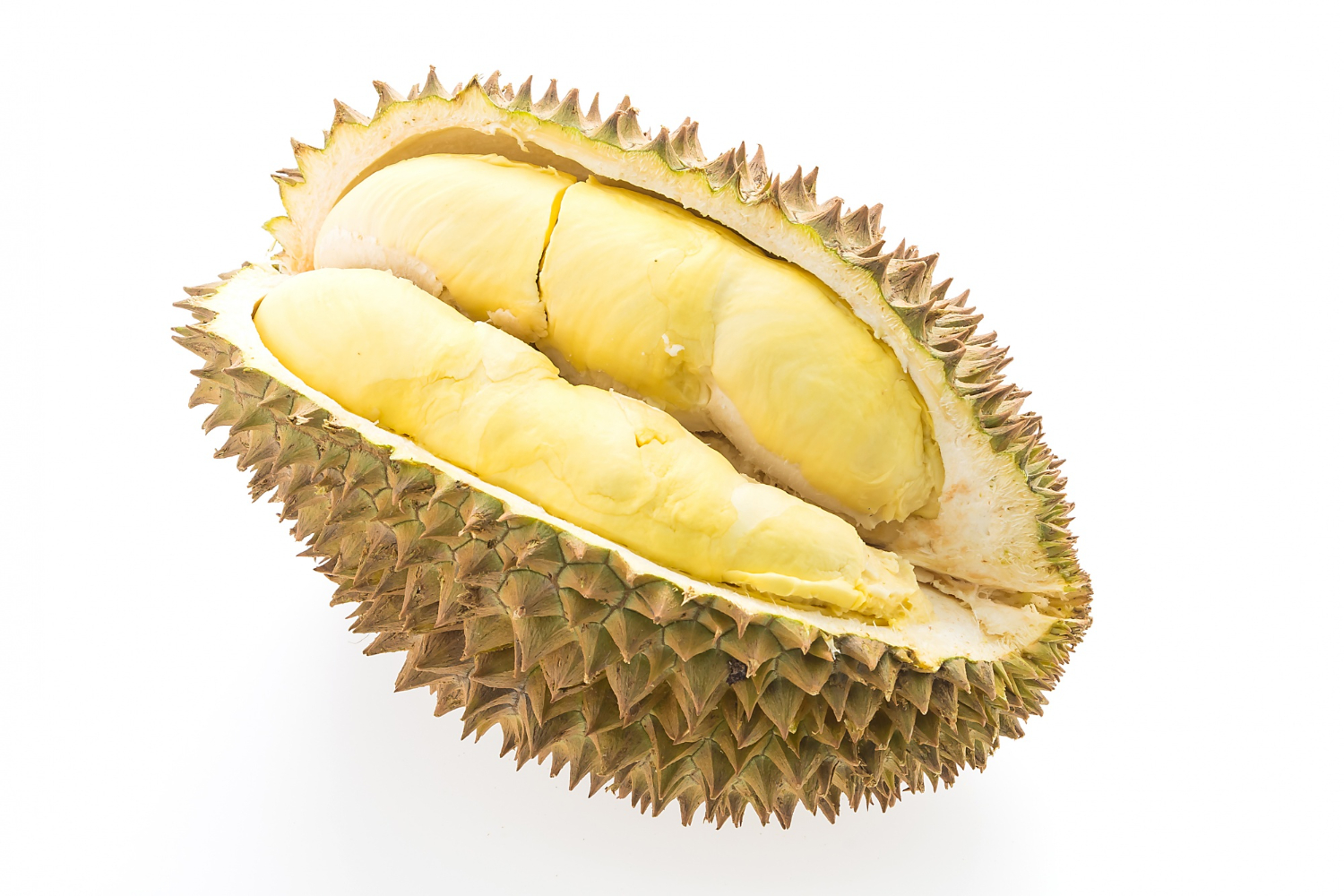Durian is a unique and infamous fruit known for its distinctive characteristics and strong odor
- Appearance: Durian fruits are large and can weigh between 2 to 7 pounds (1 to 3 kilograms). They have a thick, spiky outer shell that is green or brown in color.
- Aroma and Taste: Durian is famous for its strong and distinctive aroma, often described as a mix of sweet, fruity, and sometimes slightly onion-like or sulfurous. Some people find the smell overpowering, while others enjoy it. The taste of this is rich, creamy, and sweet, with a custard-like texture. The flavor can vary depending on the variety of durian..
- Harvesting: Durian fruits are harvested when they are fully ripe. This is usually indicated by a slight cracking of the shell and a strong aroma. It is important to handle durians with care due to their sharp spines.
- Nutritional Value: Durian is a nutrient-dense fruit. It is a good source of fiber, vitamin C, vitamin B complex, potassium, and copper. However, it is also relatively high in calories and fat compared to other fruits.
- Storage: Durian is best consumed fresh and at room temperature. If you need to store it, you can place the whole fruit or opened segments in an airtight container and store it in the refrigerator. However, the aroma of durian can be strong and may permeate other foods in the refrigerator, so it’s a good idea to wrap it tightly or store it separately.

How to grow durian
- Climate: Durian trees thrive in tropical climates with high humidity and temperatures between 80°F (27°C) and 90°F (32°C). They require a stable climate without extreme fluctuations or frost. Choose a location with ample sunlight and protection from strong winds.
- Soil: Durian trees prefer deep, well-drained soil that is rich in organic matter. The soil should have a pH level between 6.0 and 7.5. Adequate soil drainage is crucial, as trees are susceptible to root rot in waterlogged conditions.
- Seed Selection and Germination: Obtain fresh durian seeds from a reputable source. Soak the seeds in water for 2 to 3 days to soften the outer shell. Plant the seeds in nursery containers or directly in the ground, about 1 inch deep. Provide regular watering and maintain a warm and humid environment for germination. Germination can take several weeks to months.
- Care and Maintenance: Durian trees require regular care and maintenance. Water the trees regularly, especially during dry periods. Mulching around the base of the tree helps retain moisture and suppress weeds. Fertilize the trees with a balanced organic fertilizer, following the recommended dosage, to promote healthy growth. Prune the trees to remove dead or diseased branches and to maintain a desired shape.
- Pollination: Durian trees are typically cross-pollinated by specific insects, particularly fruit bats and certain species of bees. To improve pollination and fruit set, consider planting multiple durian trees of different varieties in close proximity.
- Harvesting: Durian trees take several years to start producing fruit, usually around 6 to 10 years or more. The exact time to harvest fruit varies depending on the variety and region. Harvest the fruit when the spiky outer shell starts to crack, and the base of the fruit changes from green to yellowish or brownish. The flesh inside should be soft and creamy.
.
Source of information : https://chat.openai.com/
Other fruits : https://thailandseasonfruit.com/
